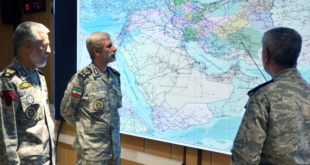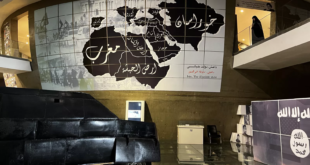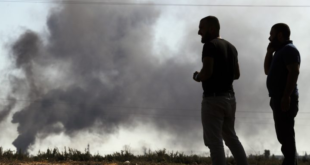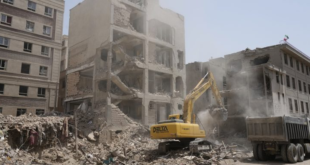Last week, Taliban militants attacked the home of Afghan Defense Minister Bismillah Khan Mohammadi. The well-coordinated attack involved gunmen and a suicide bomber. A resulting battle broke out in central Kabul that lasted for several hours. In the end, the attackers were killed and the defense minister and his family were safe.
This audacious attack comes on the heels of the Taliban’s recent territorial advances across much of Afghanistan since the withdrawal of international forces. In particular, the sudden withdrawal of US forces caught many by surprise and created a security vacuum across much of the country.
The Taliban acted quickly and tactically to swoop into remote districts and capture them from the Afghan government. These successful Taliban attacks were magnified by international media outlets, making it seem as if the Taliban was on the verge of capturing the whole country.
But this was never close to happening. In some cases, the Taliban continue to threaten some provincial capitals, but have yet to capture and hold one. In fact, it is worth pointing out that, since losing power in 2001, the Taliban have only captured a provincial capital twice. In both cases the militants were only able to hold it for a few days before being ousted again.
Currently, the Taliban are focusing their military efforts against three important cities in Afghanistan: Lashkar Gah, Kandahar and Herat.
Lashkar Gah is the capital of Helmand province, which has been a hotbed of Taliban insurgency for years. Because of the strong base the Taliban have in the province, it is not surprising that the city is under pressure. It is also not surprising that the Taliban want to capture Kandahar and make the city its de facto capital again. Whoever controls Kandahar can also more easily control the surrounding provinces.
However, the Taliban’s major offensive to capture Herat is more surprising.
Herat is a city of great historical and cultural significance, as well as geographic importance. It was one of the key cities on the Silk Road. Today, it is the third-largest city in Afghanistan. Herat is located in western Afghanistan very close to the border with Iran. Historically, Herat was often besieged by Persian forces and even today Iranians consider the city and the surrounding region to be under their sphere of influence.
Since the US invasion of 2001, Herat and its surrounding areas have been relatively stable, which is why the Taliban’s recent advance to the gates of the city is so concerning.
When the Taliban started capturing villages and districts on the outskirts of Herat a couple of weeks ago, the Afghan government was slow to come to the city’s aid. In the absence of government help, the remarkable, very popular, and somewhat controversial warlord-cum-former governor of Herat, Ismail Khan, took it upon himself to organize a local defense of the city. He successfully pushed back the Taliban until reinforcements from Kabul arrived, but fighting still rages on the outskirts.
Images of the white-bearded 75-year-old Khan wearing his trademark black-and-white turban and brandishing an assault rifle on the front lines have inspired Afghans across the country to form local militia groups and take up arms against the Taliban.
If the defense of Herat is successful, it might be considered a turning point in the war. Equally, if Herat does eventually fall to the Taliban, even after all the reinforcements sent from Kabul and Khan’s leadership, this would not bode well for the future of the country.
Last week, President Ashraf Ghani delivered a major speech to the Afghan parliament — the first such speech since the US troop withdrawal started. He outlined his government’s security plan to restore stability across the country and roll back the recent advances made by the Taliban.
Without going into too many details, Ghani claimed that his strategy would bring stability to Afghanistan within six months. The situation in Herat is a major test of that claim.
The current situation in Afghanistan is also a test for US President Joe Biden. He claimed that America would not abandon the Afghans even though he removed all US forces. However, a successful defense of Herat could slowly shift the momentum on the battlefield to the Afghan government. Biden needs to make a grand gesture to visibly show America’s continued support to the Afghan people — especially in this perilous time of need. The easiest and most effective way to do so is from the air.
In recent days, the US has conducted a number of airstrikes in Helmand province to support the Afghan military there. Biden should be willing to expand the scope of US air support to help Afghan forces across the country even if this means operating the aircraft from a neighboring country. This is especially true regarding the situation in Herat.
The Taliban have made some advances in recent weeks, but the fight for the country is far from over. The Afghan government recaptured dozens of districts that had temporarily fallen to the Taliban. A successful defense of Herat, and the proliferation of local security forces, might show the Taliban once and for all that this is not 1996 all over again. They will not be able to roll into Afghanistan’s major cities so easily as they did then. Increased US air support could help the Afghans enormously.
The only path to peace for all Afghans, including the Taliban, will be through a genuine and enduring peace settlement. The terms of that peace must be decided by Afghans in Afghanistan.
Keep an eye on Herat. The outcome of this battle will likely shape the future of the country.
 Eurasia Press & News
Eurasia Press & News



